After learning these scientifically-proven Jade Plant Benefits, you’ll find out that growing it indoors can make you healthy & wealthy.
Crassula Ovata, which is commonly known as the jade plant, also goes by other names such as Money Plant, Dollar Plant, Lucky Plant, and Friendship tree. Thanks to its immense popularity as a houseplant, surely you must have one in your home. And, if you’re not growing it indoors yet, you’ll be, after reading these Jade Plant benefits in this article!
1. It Improves Indoor Air Quality
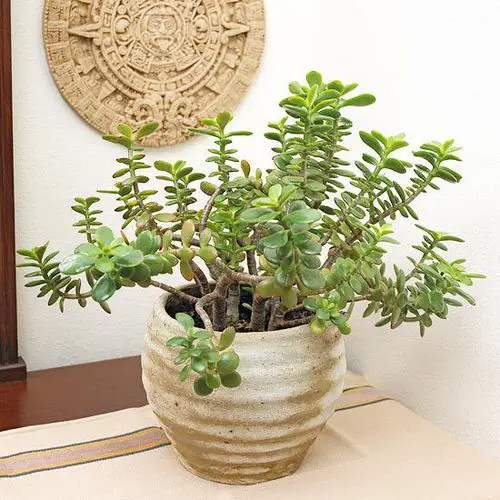
Scientists found out in recent research that indoor air can be as polluted and deadly as outdoor air. It can even lead to the “Sick Building Syndrome,” allergies, dizziness, headache, nausea, and lack of concentration are some of the symptoms. Whereas proper ventilation is the best way to prevent this, introducing air-purifying houseplants like the snake plant, golden pothos, spider plant, dracaena, aloe vera, and the jade plant also works.
- Things like wall paints, polishes, glues, and fire retardants emit Volatile Organic Compounds like formaldehyde, acetone, benzene, and toluene inside a house that can be very harmful.
- According to a New York State University research, a jade plant can remove these VOCs.
- It’s best at removing toluene and acetone. You can learn more about this research here.
- Toluene exposure can cause weakness, exhaustion, confusion, insomnia, and serious problems like liver and kidney damage, according to the United States Department of Labor.
Also Read: Peace Lily Plant Benefits
2. It Increases Humidity
Low relative humidity in indoor air can affect your health and beauty. Dry skin, flaky lips, itchy throat, static electricity, cold & flu, and allergies are some of the symptoms. Moreover, infectious bacteria and viruses can survive for long in dry air. Humidifiers are the best product to increase indoor humidity, but houseplants do have their share–Pothos, peace lily, spider plant, jade plant, and philodendron are best for this purpose.
- Low humidity issues arise in winter, due to cold air, your heater also lowers the humidity. In summers, especially in hot climates, air conditioners contribute to reducing the relative humidity of the air, which is why some people have a headache in AC air.
- 30 to 60 percent relative humidity is ideal for homes and offices, and a jade plant can contribute to this.
- According to this Kansas State University study, the jade plant and spider plant can increase the relative humidity. Since the jade plant follows Crassulacean Acid Metabolism, it can exhibit Evapotranspiration in the dark as well.
3. A Good Luck Symbol
The Jade plant is believed to attract prosperity and fortune in many Asian countries. In Feng Shui, it’s a symbol of good luck and consistency because it’s an evergreen plant. It’s a perfect plant for both your home and office. Also, a jade plant can be a fantastic wedding favor and housewarming gift. Here are some of the ways you can place it to bring positivity to your place:
- Place the plant right next to the entrance of your business or office to bring growth.
- Keeping it close to the cash register or box is also a good idea.
- Put the plant in the Southeast corner of your home to bring wealth to your home.
- Keep the Jade plant in an Eastern section of the house to boost the health and happiness of family members.
- If you believe in Feng shui, avoid this plant in any bedroom of the house.
Also Read: 14 Indoor Plants that Bring Positive Energy
4. Easy to Maintain
If you want a plant that will keep you free from its maintenance, buy a jade plant. If you’ll save it from low temperatures and cold drafts in winter and avoid overwatering, it’ll grow on for years. Since it’s slow-growing, you won’t need frequent repotting, pruning, and fertilizing as well.
- Being a Succulent, the Jade plant can thrive in neglect for days.
- It adapts well to partial shade and low-lighting conditions. It can grow well in day-long indirect sunlight. However, a spot that receives several hours of direct sun is ideal.
- We also added it to our list of best low light succulents, check it out here.
- It doesn’t need frequent watering. You only have to water the plant when the soil seems dry.
Also Read: Best Succulent Types to Grow Indoors
5. Medicinal Properties of Jade Plant
The Jade plant is not just an ornamental houseplant that brings you financial luck. It’s used as a medicinal plant in Chinese culture and the indigenous KhoiKhoi community and other African tribes. Extract from its leaves is used to treat wounds, stomach upset, warts, and diabetes.
- For skin warts, Jade plant’s juice is applied to it overnight for three days.
- Traditional Chinese medicine has mentioned the Jade plant as a diabetes remedy.
- Drinking tea made from Jade leaves helps to mellow out diabetes symptoms. Read the detailed version here.
- As per Feng Shui, the Jade plant helps to open the energy flow in the body. It accelerates and activates ‘Chi,’ uplifting, positive vibes.
6. It Adds a Touch Of Beauty
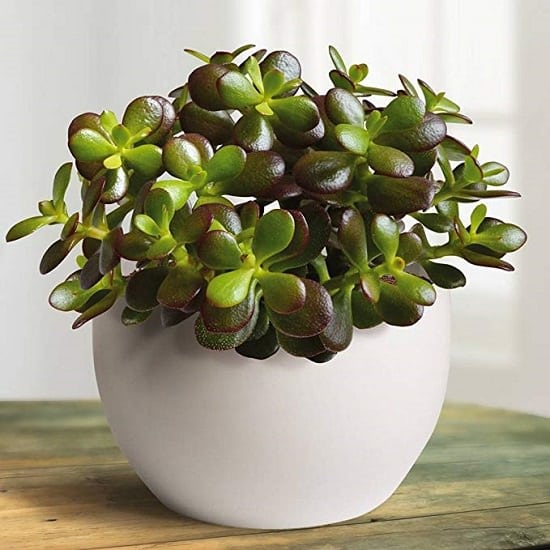
With glossy, oblong, or round foliage, shining in a deep shade of green, the Jade plant looks appealing. It matches every type of home interior due to its stubby look, resembling a miniature tree. The compact form makes it a perfect coffee table and office desk plant. If that is not enough, it greets with beautiful pink or white flowers in late winter and spring:
-
Common Jade Plant
Crassula ovata, which was previously known as Crassula argentea, Crassula obliqua, and Crassula portulaca, is everyone’s favorite! It has egg-shaped leaves with a tint of jade green.
-
Silver Jade Plant (Chinese Jade)
Crassula arborescens has flat-looking leaves, in a tint of silvery blue. They are further enhanced by the red color, surrounding the edges of its leaves, making it look spectacular!
-
Variegated Jade
Crassula ovata ‘Variegata’ is an ornamental variety of the common Jade plant. The only difference is its leaves are striped with lemon-yellow color.
Also Read: DIY Succulent Planter Ideas
7. It Absorbs CO2 in the Night
The jade plant and some other arid climate plant species like Mother-in-Law’s Tongue follow a rare Crassulacean Acid Metabolism. It provides them the ability to absorb CO2 at night. It’s one of the very few CAM plants that you can grow indoors to raise the quality of the air in dark hours.
- The Jade plant may reduce Carbon dioxide at the night, but it performs photosynthesis during the day through the Calvin cycle.
- Even if you don’t believe in Vaastu and Feng shui, it’s actually good to keep the jade plant in your bedroom because it’s a CAM plant and increases humidity as well.
Other Jade Plant Benefits
- As jade is a slow-growing plant, it saves you from the hassles of repotting it regularly once it outgrows its container.
- Jade plant is one of the best Fairy garden plants as it looks like a miniature tree–pair it with pebbles, tiny houses, and other cool accessories.
- Due to its appearance, a jade plant can be made into a bonsai easily.
Also Read: DIY Fairy Garden Ideas


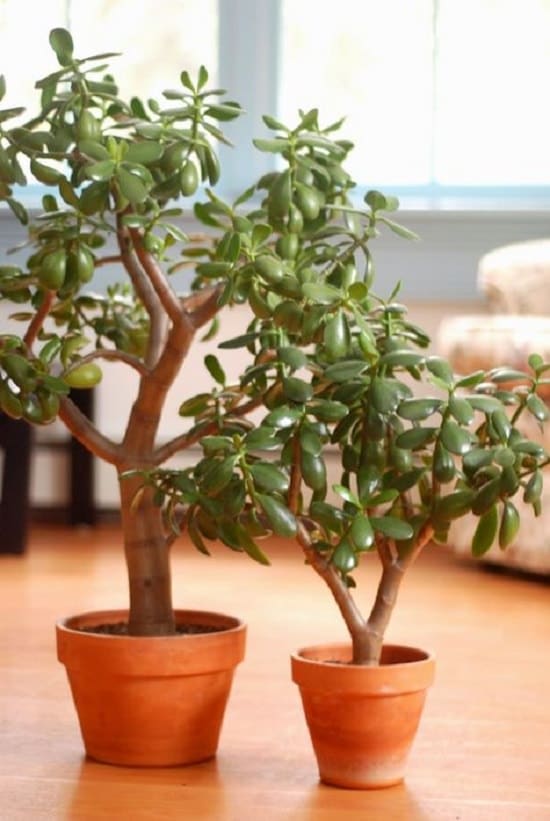
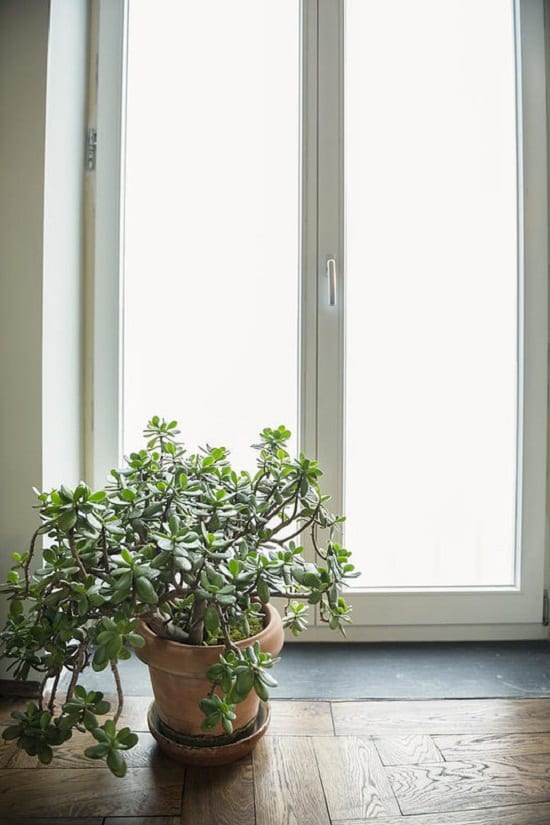
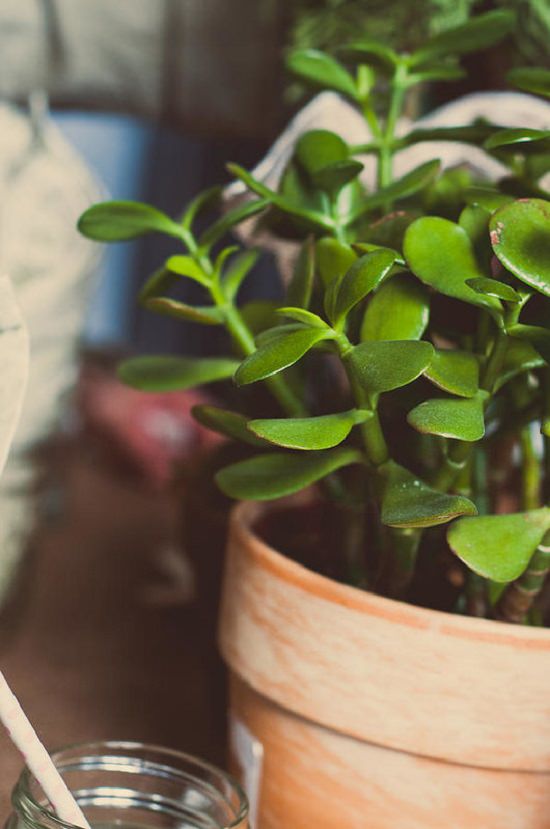

Love it!
Can jade plant s be kept in a dinning space?
Depending on the light, yes, it can be
My jade plant leaves point down is this bad
My heart lept for joy seeing my first jade cache plant. I HAD TO HAVE IT!!!! I am hoping for better luck and finances.
Hi
May I eat this jade plant flowers or root?? Is it edible or ingestible?? Let me know about it please.
Thanks a lot.
Hi,
May Jada plant be planted outside or it’s indoor plant, when l say outside l mean in a garden wt other plants. Or it needs its own space.
Thank you.
I am a jade o file, if there such a word!? I need to know if there is a book on jade that is more scientific? Shows the process of propagation, it’s aspiration process, main stem circulation structure, process of flowering! Any help please…email is whb1953@yahoo.com
it is the best thing ever